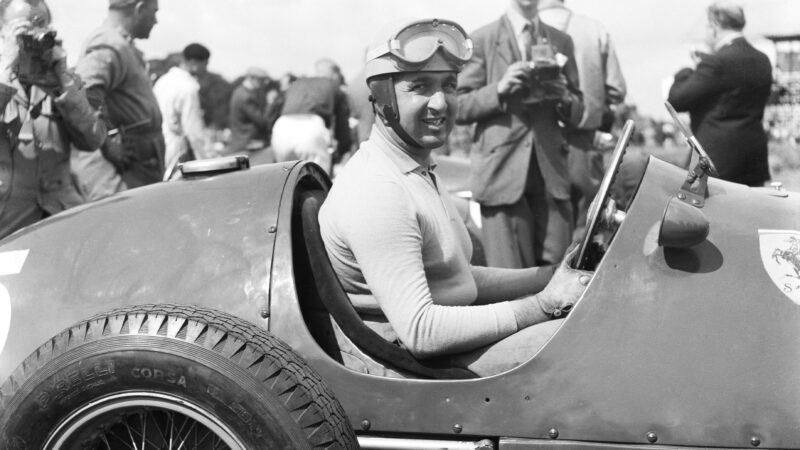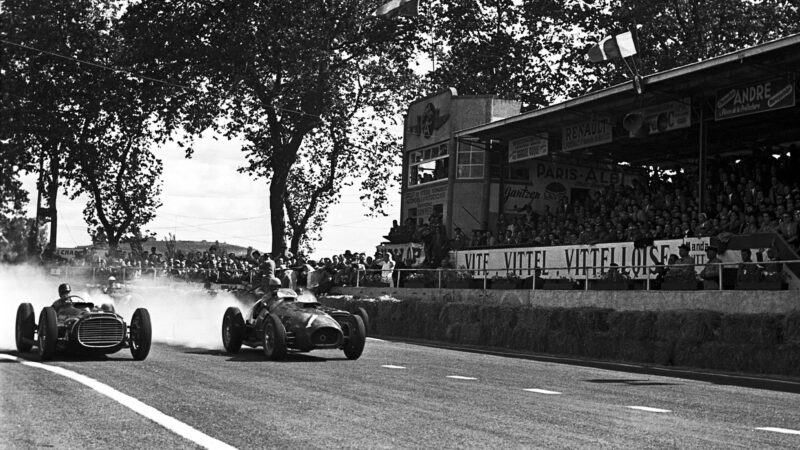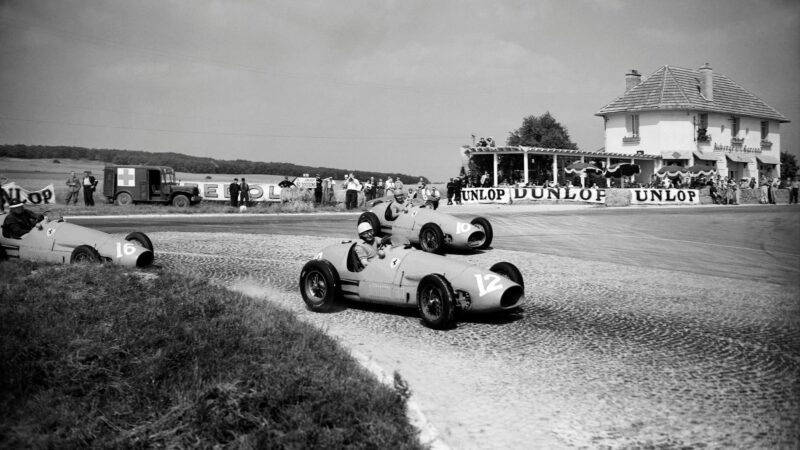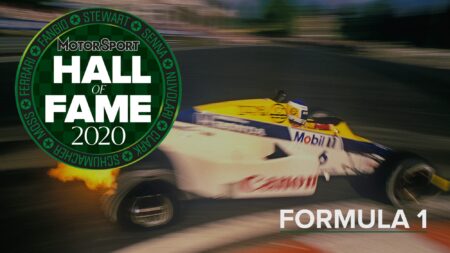Continuing reliability niggles – Lancia had overstretched and was feeling the pinch – blighted the launch of his 1955 campaign, too. Rival Mercedes-Benz had in the meantime upped its game, not least by the signing of Stirling Moss in support of Fangio. Ascari was under pressure like never before.
Having survived GP racing’s most memorable crash – bobbing to the surface after his car had plunged into the Monaco harbour – Ascari attended Eugenio Castellotti’s test of a Ferrari sports car that there were to share in the Monza 1000km. There was no suggestion that he was scheduled to drive it.
Ascari was not only a stickler for detail – as evinced by his neat style behind the wheel – but also he was extremely superstitious. Yet that day he chose to tempt fate – and crashed to his death in a borrowed car while wearing a borrowed crash helmet. He was just four days older than his late father – both having met their maker on the same day of a month.
That’s just spooky coincidence. What’s amazing – and indicative – is that car-crazy Italy has yet to nurture a driver of similar status – although Ascari did inspire a certain Mario Gabriele Andretti prior to his finding an achievable outlet for his ambition and talent as a refugee in America.
Alberto Ascari: 2020 Hall of Fame nominee
Voting is open for the 2020 Motor Sport Hall of Fame, with Alberto Ascari among the F1 nominees. Make your choices below, and be in with a chance of winning a £265 Striling Moss print from Tim Layzell.




